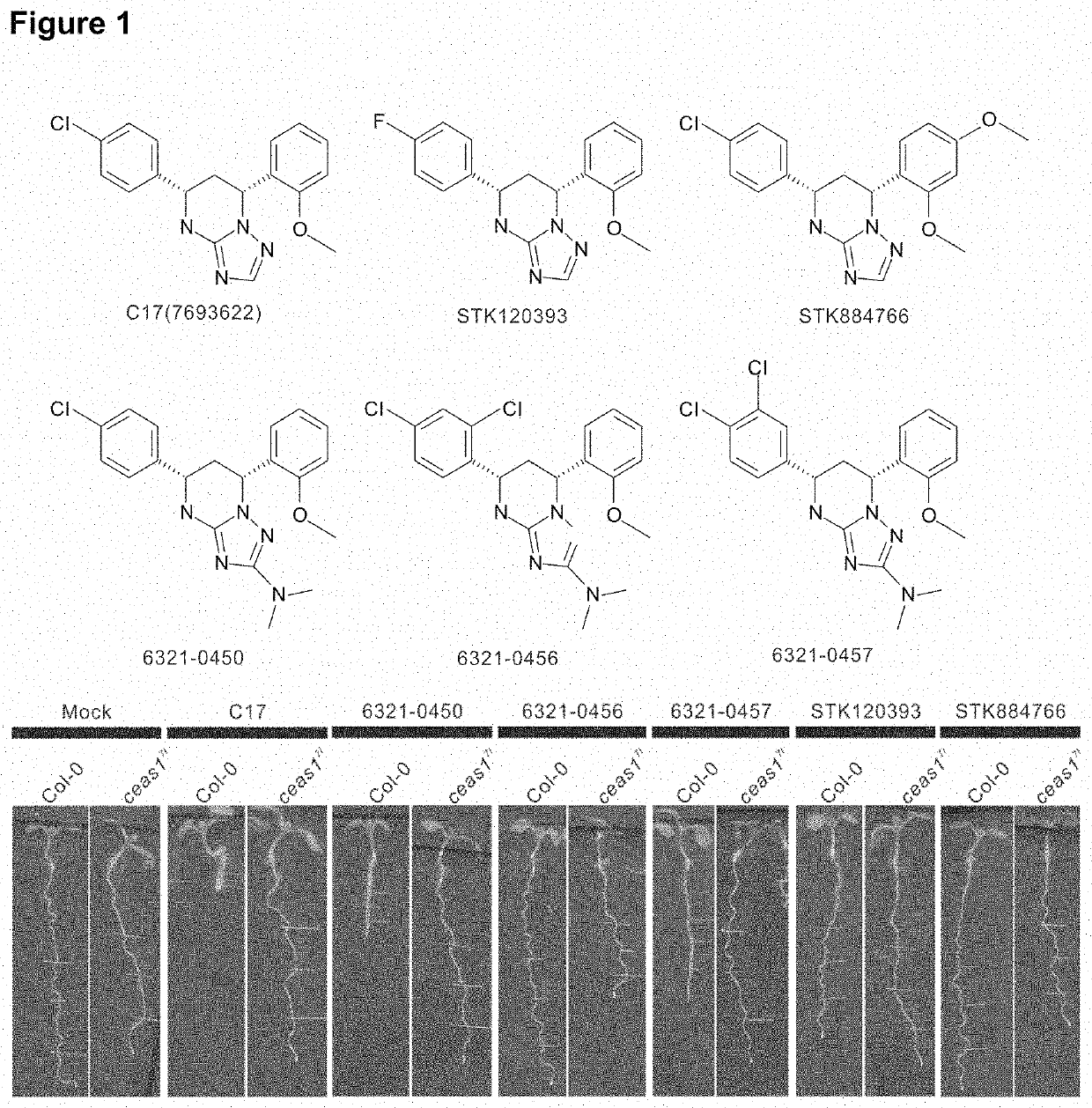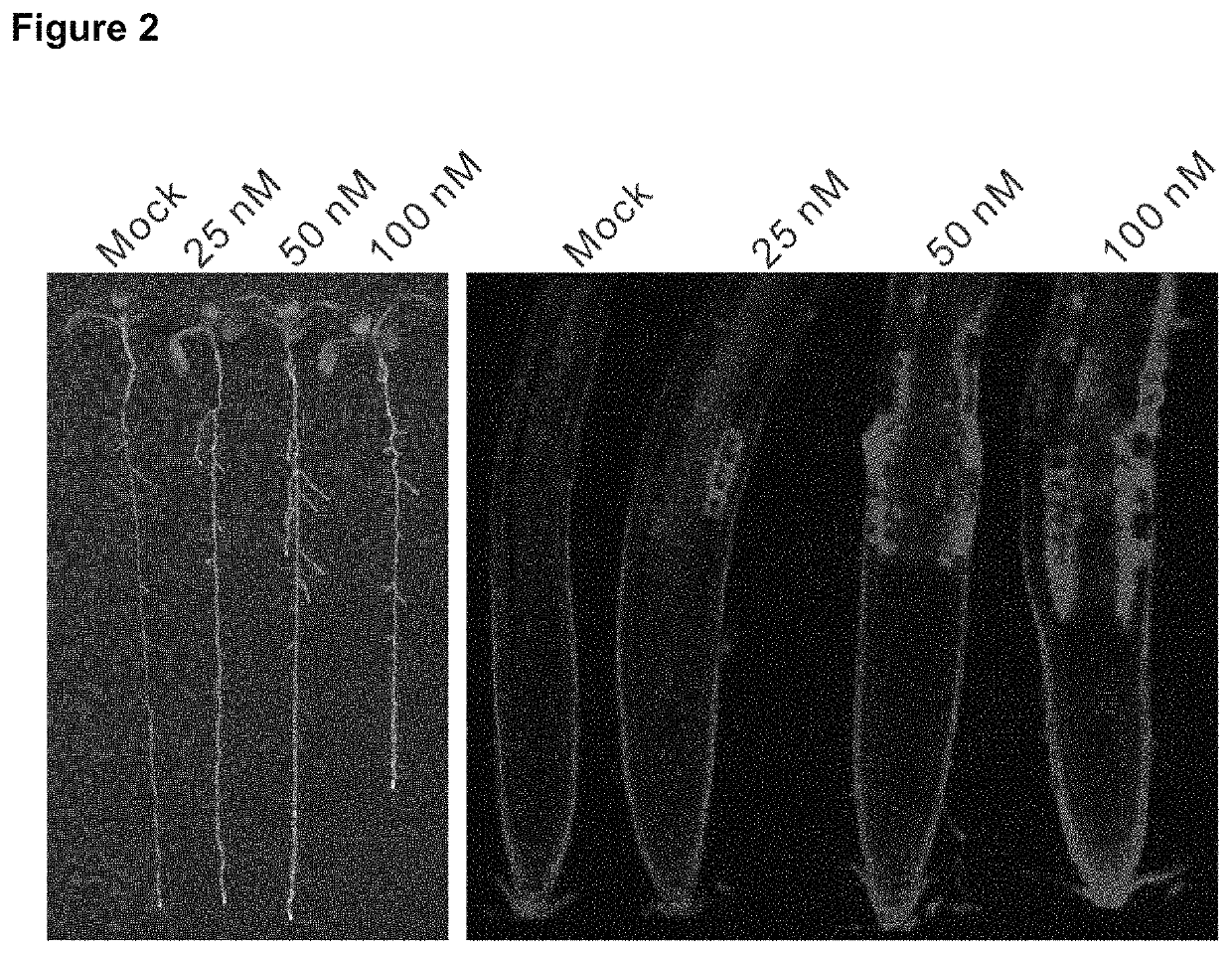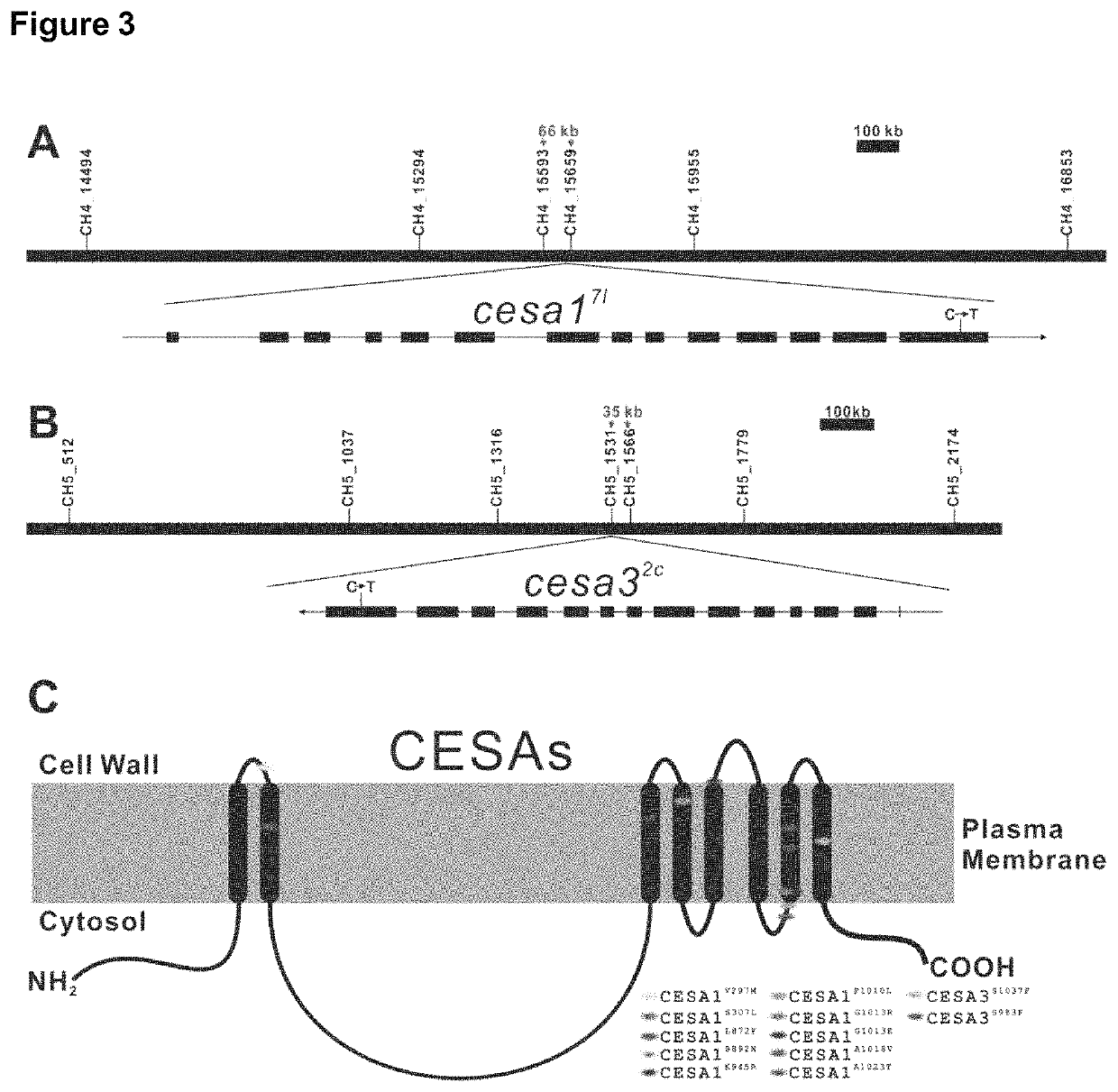Cellulose synthase inhibitors and mutant plants
a technology of cellulose synthase inhibitors and mutant plants, applied in the direction of plant growth regulators, enzymes, biocides, etc., can solve the problems of brittle cell walls, inability to rescue the toxicity of dichlobenil,
- Summary
- Abstract
- Description
- Claims
- Application Information
AI Technical Summary
Benefits of technology
Problems solved by technology
Method used
Image
Examples
examples
1. C17 Possesses Growth Inhibitory Activity
[0074]C17 (5-(4-chlorophenyl)-7-(2-methoxyphenyl)-1,5,6,7-tetrahydro-[1,2,4]triazolo[1,5-a]pyrimidine; ChemDiv, Catalogue #: 7693622), a synthetic molecule, was identified from a chemical screen as a ploidy-inducing compound in Arabidopsis protoplasts. To test the effects of C17 on plants, Arabidopsis seeds were plated on half MS medium (Murashige, T. and F. Skoog, 1962) in the presence or absence of 200 nM C17 or its analogues. C17-treated plants displayed severe growth inhibition accompanied by radial swelling of the root tip (FIG. 1). Similar but milder defects were observed for wild type plants grown in presence of three C17 analogues (FIG. 1). To dissect the C17 inhibitory effects, we employed confocal laser scanning microscopy (LSM710, ZEISS) to observe the root structure. Five-day-old Arabidopsis seedlings grown on vertical plates were transferred to half MS medium containing C17 for further growth. After three-day treatment, the roo...
PUM
 Login to View More
Login to View More Abstract
Description
Claims
Application Information
 Login to View More
Login to View More - R&D
- Intellectual Property
- Life Sciences
- Materials
- Tech Scout
- Unparalleled Data Quality
- Higher Quality Content
- 60% Fewer Hallucinations
Browse by: Latest US Patents, China's latest patents, Technical Efficacy Thesaurus, Application Domain, Technology Topic, Popular Technical Reports.
© 2025 PatSnap. All rights reserved.Legal|Privacy policy|Modern Slavery Act Transparency Statement|Sitemap|About US| Contact US: help@patsnap.com



